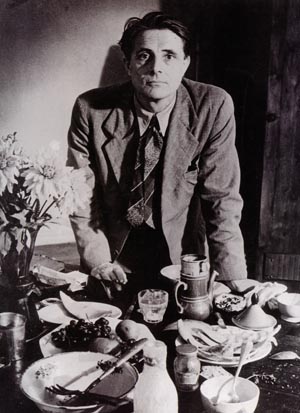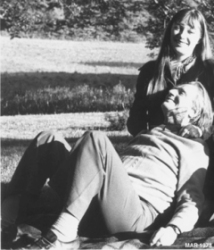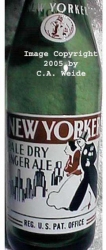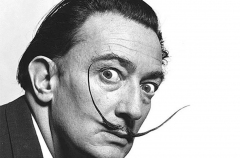
MIRO - PICASSO - KANDINSKY - ERNST - EVERGOOD - DE KOONING - PETERDI - NEVELSON - MATTA - TAMAYO - ROTHKO |||| JUST SOME OF THE ATLIER 17 (FOUNDED BY HAYTER) ARTISTS WHO LEARNED PRINTMAKING FROM HAYTER
Writes Herbert Read in the Preface to Hayter's book, New Ways of Gravure, 1949, Rutledge and Kagan Paul, Ltd., London:
"Among contemporary artists William Stanley Hayter has a wide influence due to two distinctive features. In the first place, he has revived the workshop conception of the artist - the artist, not as a lone wolf howling on the fringes of an indifferent society, but as a member of a group of artists working together, pooling their ideas, communicating to one another their discoveries and achievements. In the second place, he is an artist with a philosophy, a philosophy that assigns a particular function to art in life, and to the artist in the life of society."
The founder of Atelier 17 in 1927 which was originally locted on the Rue Moulin Vert, the name of the atelier was derived from its later location at 17 Rue Campange Premiere in Paris where Hayter settled in the early 1930's. Best known for the many celebrated artists such as Max Ernst, Philip Evergood, Leonora Fini, Joan Miro, Yves Tanguy, Isabel Bishop, William De Kooning, Gabor Peterdi, Louise Nevelson, Matta, Rufino Tamayo, Mark Rothko and an infiniti of other artists much too numerous to list here. Hayter insisted that printmaking need not be a method of reproduction but rather a form of artistic creation. The artists often worked directly on the plate and were constantly seeking new experiences and techniques.
In 1939 Atelier 17 suspended its activities in Paris and moved to New York in 1940. In 1950 it was reestablished in Paris. In 1988 when Hayter died, the Atelier was renamed "Atelier Contrepoint". Hayter's printmaking is legendary.




.png)